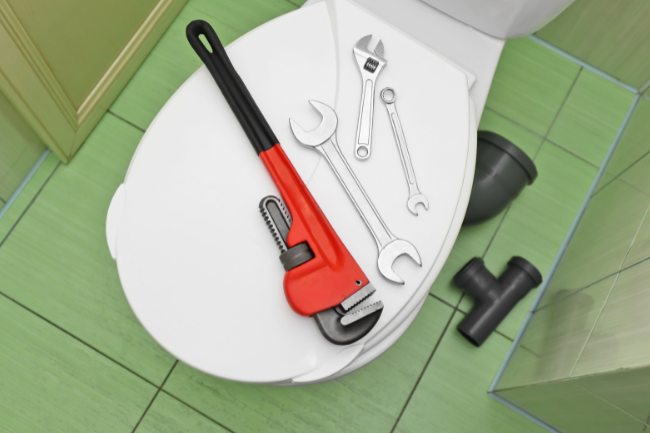What Property Owners Should Know About California Plumbing Regulations
Posted by William Heinselman on

Environmental consciousness isn’t a fad or even an option anymore; it’s something that’s, increasingly, becoming required by law in the form of property plumbing regulations at both the state and national level.
In California, property owners have to adhere to water-conservation regulations since they were introduced in 2019.Understanding California Plumbing Regulations
Water conservation efforts have recently taken center stage in the realm of environmental policy changes, highlighting the urgent need for more sustainable practices. For property owners, this shift has led to the introduction of new regulations and legal requirements that redefine what is considered “standard” for property plumbing systems.
As these regulations evolve, property owners must stay informed and proactive. When engaging in real estate transactions such as selling, trading, or leasing properties, it's crucial to anticipate and adapt to these new plumbing regulations. This is not just limited to residential properties but extends to multifamily dwellings and commercial establishments as well. Compliance with these regulations not only contributes to environmental sustainability but also enhances the value and attractiveness of the property in a market that increasingly values green initiatives.
In the wake of these changes, property owners are encouraged to consult with environmental policy experts and legal advisors to ensure their properties meet current and future standards. By doing so, they not only adhere to the law but also play a vital role in conserving water resources for future generations. This proactive approach to adapting to new plumbing regulations signifies a commitment to sustainability and environmental stewardship, critical values in today’s society.
Non-Compliant Plumbing Fixtures for California Plumbing Regulations

For legal purposes, the State of California considers all of the following to be noncompliant plumbing fixtures (fixtures facing mandatory replacement or removal in upcoming regulatory changes):
- Any property faucet using more than 2.2 gallons of water per minute
- Any shower heads with a flow capacity exceeding 2.5 gallons per minute
- Any toilet that consumes over 1.6 gallons of water per flush
- Any urinal consuming more than one gallon per flush
As per California’s Senate Bill No. 407, approved and filed on October 11, 2009, and effective January 2014, any single-family property alterations must include the replacement of noncompliant plumbing fixtures to receive permit approval.
Beginning January 1, 2017, any noncompliant plumbing fixtures in single-family properties must have been replaced by the property owner with a water-conservative alternative. On January 1, 2019, this requirement was broadly extended to include multifamily and commercial residential properties.
In certain circumstances, however, such replacements to multifamily and commercial properties are already required (as per the January 2014 enactment). This includes:
- If planned building alterations/improvements are estimated to cost over $150,000.
- If building additions with concurrent permits are estimated to increase floor space by 10%.
- If any alterations or improvements, which require a building permit, are made to a room in a given building.
What all of this means is, generally, if your commercial residential or multifamily renovations exceed a certain budget or space, or require a permit, you’re required to update noncompliant plumbing fixtures, which have become mandatory anyway in 2019.
Exemptions to Californian Conservative Regulation
The compliance regulations listed in the above segments do not apply to the following properties or types of property, as listed in Senate Bill No. 407:
- Historical sites registered with the State of California.
- Property for which a licensed plumber has certified that replacing noncompliant plumbing fixtures with water-conservative models is not technically feasible.
- Buildings with permanently disconnected water services.
High-efficiency plumbing fixtures are becoming standard for good reason. They’re innovative technologies that home and commercial property owners should install in their buildings not just because it’s becoming legally required to do so, but because it can help reduce environmental footprints and save millions upon millions of dollars nationwide.
How Plumbing Effects the Environment
One critical aspect of a sustainable home that should never be overlooked is the plumbing system. In an era where water contamination is becoming increasingly common, understanding the intricacies of plumbing systems and their environmental impact is more important than ever. Our drinking water, essential for daily life, is transported through these systems, highlighting the importance of choosing the right plumbing materials.
Environmental considerations should include ecological toxicity, which assesses the potential harm of materials to the ecosystem. Air pollution, stemming from the manufacturing and transportation of plumbing materials, also demands attention. Furthermore, the depletion of fossil fuels used in the production of these materials and their contribution to global warming are significant factors to consider. By taking these aspects into account, homeowners can make informed decisions that favor both the environment and the sustainability of their homes.
What You Can Do to Adhere to California Plumbing Regulations
Water-conservative plumbing solutions have become a legal requirement for all Californian residential properties since 2019. While you can sit back and wait until then to update your noncompliant plumbing fixtures (or even sooner, if you’re a single-family homeowner), we recommend being proactive in the face of these regulations and replacing your outdated fixtures today.
Inefficient plumbing fixtures, from running toilets to outdated faucets, can consume as much as 30% more water than high-efficiency models - this has implications not just for the environment, but also on your wallet.
Replacing non-compliant fixtures is going to happen one of two ways: either by legal requirement or by choice until it is required to do so. Due to the great savings that come with these solutions, why wait?
Contact Express Sewer to Update Your Plumbing Fixtures
At Express Sewer & Drain, we want to make sure your plumbing is compliant and up-to-date. Our experienced plumbers have the knowledge and skills to efficiently update all of your plumbing fixtures, from toilets and faucets to showerheads and more.
Don't wait until it's too late – schedule a consultation with our team today and start saving on your water bill while also doing your part to conserve our precious resources. Let us help you stay ahead of regulations and ensure that your home is equipped with the most efficient plumbing fixtures available. Don't let outdated fixtures drain your wallet – contact Express Sewer today.
Topics: Plumbing in Sacramento, Commercial Plumbing, Municipal Plumbing, Home Plumbing



![How to Prevent Flooding [6 Tips to Protect Your Property]](https://www.expresssewer.com/hubfs/prevent_flood.png?width=550)



